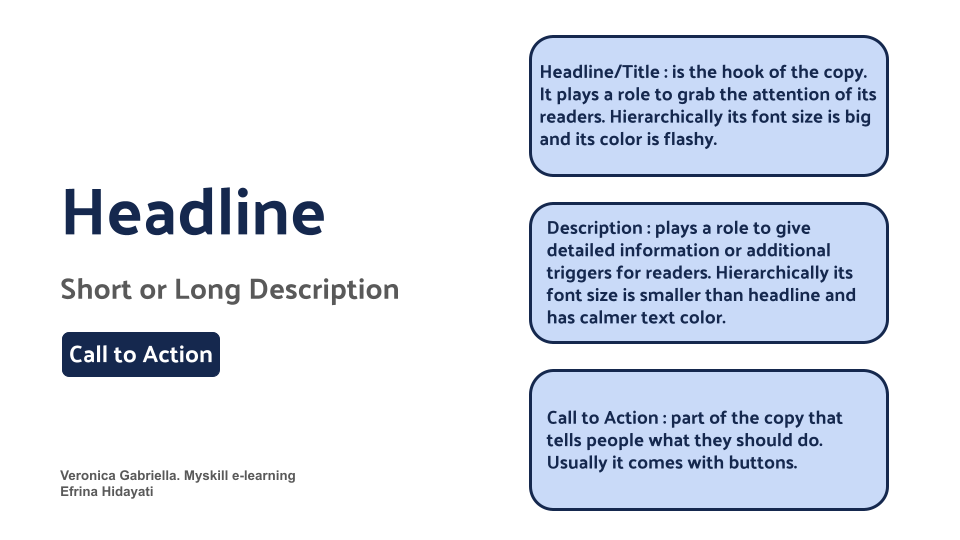Table of Contents
Introduction
In the realm of digital content, headlines act as the gateway to your message. They serve as the first point of contact with your audience, making it imperative to get them right. Effective headlines not only summarize the essence of your content but also entice readers to click through and engage further. So, what exactly makes a headline irresistible?
Understanding the Basics of Headline Copy
Headline copy, simply put, is the text that appears at the top of a piece of content, designed to capture attention and encourage engagement. It serves multiple purposes: from summarizing the content to sparking curiosity and conveying the value of what lies beneath. For digital marketers and content creators alike, headlines are potent tools for driving traffic and influencing reader perception.
Key Elements of a Powerful Headline
A compelling headline typically incorporates several key elements:
- Clarity and Specificity: Clearly articulating what the content offers and setting clear expectations.
- Emotional Appeal: Eliciting emotions such as curiosity, excitement, or urgency to prompt action.
- Use of Keywords: Incorporating relevant keywords to enhance search engine visibility and attract organic traffic.
Crafting Headlines for Different Platforms
Different platforms require different approaches to headline writing:
- Blog Posts: Long-form headlines that convey the essence of the article and include relevant keywords.
- Social Media: Concise and impactful headlines that stand out amidst a busy feed.
- Email Marketing: Personalized and compelling headlines that encourage opens and clicks.
The Psychology Behind Effective Headlines
Understanding how thelouisianapost.com influence reader behavior is key to crafting effective copy:
- Influence of Cognitive Biases: Leveraging cognitive biases like curiosity gap or social proof to increase engagement.
- Emotional Triggers: Using emotional language to connect with readers on a deeper level and prompt action.
Analyzing Successful Headlines
Examining real-world examples of successful headlines can provide insights into what works:
- Case Studies: Deconstructing headlines from viral content and analyzing their components.
- Lessons Learned: Applying principles from successful headlines to your own writing to enhance effectiveness.
Tools and Techniques for Generating Headline Ideas
When brainstorming headline ideas, consider using:
- Online Tools: Tools like CoSchedule Headline Analyzer or EMV (Emotional Marketing Value) Analyzer for headline optimization.
- Brainstorming Techniques: Mind mapping, word association, or group ideation sessions to generate creative ideas.
Common Mistakes to Avoid in Headline Writing
While crafting headlines, steer clear of common pitfalls:
- Clickbait: Sensationalizing or misleading headlines that disappoint readers and damage credibility.
- Overuse of Superlatives: Using exaggerated claims that fail to deliver on promises made in the headline.
Testing and Refining Headlines
Optimizing headlines is an iterative process that involves:
- A/B Testing: Experimenting with different variations of headlines to determine which performs best.
- Data-Driven Decisions: Using analytics to refine and improve headlines based on actual reader engagement metrics.
The Role of Headlines in SEO
Effective headline writing is also crucial for search engine optimization:
- Headline Tags: Utilizing H1, H2 tags effectively to signal the importance of content to search engines.
- Keyword Optimization: Incorporating relevant keywords naturally into headlines to enhance SEO rankings.
Creating Compelling Headlines in a Crowded Market
In a competitive digital landscape, standing out requires:
- Unique Selling Propositions (USPs): Highlighting what sets your content apart and appeals to your target audience.
- Value Proposition: Clearly communicating the benefits or value readers will gain from engaging with your content.
Writing Headlines that Drive Clicks and Engagement
Craft headlines that not only capture attention but also prompt action:
- Curiosity: Piquing readers’ curiosity to encourage them to delve deeper into the content.
- Call to Action: Using actionable language to prompt readers to click, share, or subscribe.
Adapting Headlines to Different Audiences
Tailor your headlines to resonate with diverse demographics and cultural nuances:
- Audience Segmentation: Understanding your audience’s preferences and adapting headlines accordingly.
- Cultural Sensitivity: Avoiding language or references that may be misunderstood or offend specific cultural groups.
Future Trends in Headline Copywriting
Looking ahead, advancements in technology will shape the future of headline writing:
- AI and Machine Learning: Automating headline generation based on data insights and predictive analytics.
- Personalization: Creating dynamic, personalized headlines that cater to individual reader preferences.
Conclusion
Mastering the art of headline copywriting is essential for digital marketers and content creators aiming to cut through the noise and captivate audiences. By understanding the psychology behind effective headlines, leveraging the right tools and techniques, and continuously testing and refining your approach, you can craft headlines that not only drive clicks but also foster long-term engagement and loyalty.

